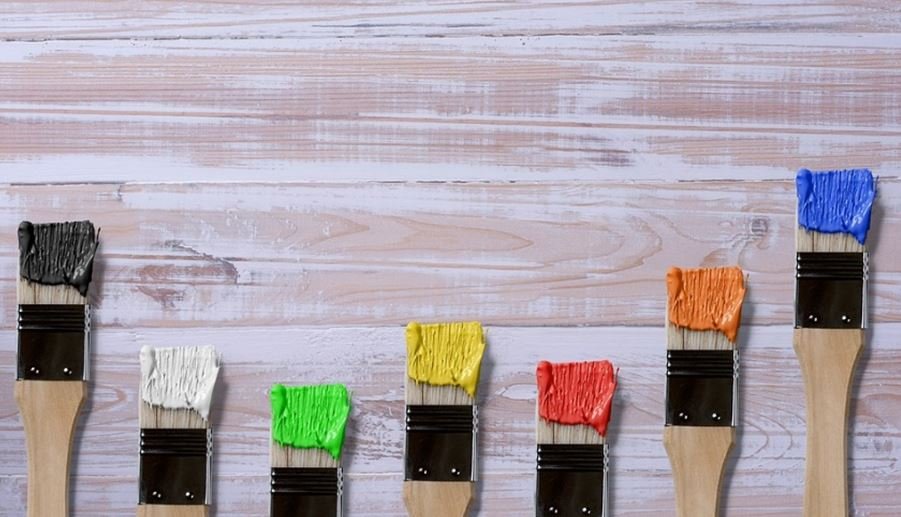Home Improvement
15 Tips for Painting your Home Like a Pro

[lwptoc]
-
Get prepared
Professional apartment painters and other trade affiliates always come to a job with the tools of trade.
Some of the items you may need include,
- drop cloths to protect your floors, furniture and household possessions,
- paint rollers (don’t forget to grab an extension pole to go with it).
- Putty knife,
- putty,
- sandpaper,
- painters’ tape
- paintbrushes of various sizes
- paint
-
Make a plan
Visualise how you want your home to look.
Do you want a uniform look all throughout the home or is there a preference for each room to have its own personality?
Is a feature/accent wall something you want?
Do you want bold or subtle colours?
How to you want the cornices and skirting boards to look? Do they require updating to suit your rooms new look?
Don’t forget your ceiling in the planning too.
-
Its colour time
Viewing colours as an overall matter can be very daunting.
Consider the style you want. If you want bright contrasts or soft neutrals?
Go with an open mind and take several samples. Samples come in various methods. You may elect for a sample pot, where you can place a small amount of paint in several spots throughout the room to ascertain its effect.
The very first matter to consider is the type of paint already on the wall and if you are intending to continue using the same style paint or another variety.
There are different sheens of paint.
Ideally, you want to continue with the same sheen.
If you put satin over builders flat, it will look totally different to the sample. It ends up with a more sealed surface than the other walls.
When it’s finally time to completely paint it will soak into the flat paint and not dry the same.
When you have completed your painting job, the sample spots will be just a tad more obvious, even through several coats of paint.
Remember if you intend to sand back the current colour of your room, you’ll need to do that first before applying the sample colour to the wall. This will establish how the end result will look.
If you don’t feel comfortable painting directly on your wall for a test run, use a poster board or foam run. Make sure it is large enough to be noticed.
The benefit of using a poster board is that you can move it from room to room or in multiple areas without going through a large amount of paint.
About those different sheens of paint.
There’s actually five!
High Sheen
Basically, a higher sheen means more shine and a high shine means a more durable paint.
High sheens are good in busy areas of your house or rooms where your little cherubs’ fingers are more likely to touch. These might include, trim and doors.
Bear in mind though, because of the shine factor, high sheen products may not be the best choice for your walls.
Satin
This sheen is more popular with interior walls.
This style of paint is easier to wipe clean than the other style of paints, and is widely utilised in playrooms, lounge rooms, kitchens and bathrooms.
Flat
This is a great sheen for hiding bumps and scratches and dings as it has no shine. A lot of home occupiers may elect to apply this type of paint to hallways and entry points in the home.
Matte
This style paint ahs low sheen and holds the pigment colour well. It won’t look shiny or reflect the sun light.
Egg Shell
This sheen is in between a flat and satin as it reflects lighter than matte, and has a slight shine, but feels flat.
-
Ascertain the amount of paint you’ll need.
The general view is 1 gallon per 400 square feet.
Generally, two coats of paint is required. A base coat and the final coat.
If you’re electing to go dark after being with a light colour, you’ll most likely require more paint. The same being with darker colours. Dark colours often require more paintthan light colours.
-
Get prepared
Paint splatters and leaves residue no matter how much care you take.
If you can remove large items such a furniture and electrical equipment out of the room, then do.
If this nis not possible, try and move it all to one corner of the room.
Cover it all with a drop sheet.
Use your painter’s tape to go over the corners of the room, window and door frames, as well as power points and light switches.
Cover up any holes in the walls with putty and wait for the putty to dry.
Don’t forget to make sure the area is adequately ventilated.
Safety is important.
Open doors and windows and have fans going if possible.
If you can, paint on a warm day as this will help speed up the drying process.
-
Plan your painting.
Start at the top of the room downwards. Ceilings painted first.
If you are having a feature wall, complete the lighter walls first then commence the darker one.
Be sure to do one wall at a time and cut in. Cut in means painting along the tops and bottoms of the wall.
Then use the roller to paint the rest of the room in a W-style pattern to allow for more coverage.
Wait for each coat of paint to dry before starting another.
-
Clean up time.
It’s important to complete this step as close to completing the painting to prevent the paint from hardening on brushes and other equipment.
Remove any drop sheets, put away the paint and wash all your brushes and rollers.
Oil based paints will need mineral spirits to clean, whilst water and latex-based paints require soapy water.
Remove the painter’s tape after checking any paint residue on them is dry.
Let the rooms air out for a while and sit back and relax.
-

 Self Improvement2 months ago
Self Improvement2 months agoUsing BCBS Rehab to Access Quality Addiction Care
-

 Games2 months ago
Games2 months agoPusoy Strategies for Play That Also Work in Pusoy Dos in English
-

 Law2 months ago
Law2 months agoHow Can a Car Accident Attorney Help You?
-

 News2 months ago
News2 months agoCreating Acoustic Comfort in Restaurants: The Overlooked Ingredient of a Perfect Dining Experience






